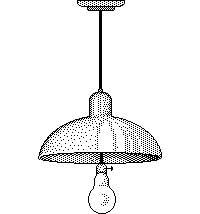Fighting the Night (II)
1990/12/01 Mujika, Alfontso - Elhuyar Fundazioa Iturria: Elhuyar aldizkaria
The first revolution in the history of lighting: gas
XVIII. At the end of the twentieth century there was a rapid revolution with the appearance of a new fuel in artificial lighting, gas. Let's see how it happened.
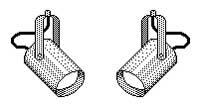
In 1680 Johann Joachim Becher discovered that by making the dry distillation of the coal, that is, by heating the coal in an airless container, the coal was a gas. When he burned this gas, he saw that he gave a quite vivid flame and called it a philosophical light. In the following years other attempts occurred, such as in 1739 Clayton also obtained gas from the coal.
In 1783 Jan Pieter Minckeler, professor of chemistry at the Belgian University of Leuven, lit up his conference room with gas light, but these isolated sessions had no practical consequences. Philippe Lebon investigated the wood in 1786 in closed containers and showed that the gas produced thus served for heating and lighting.
Lighting gas
Before giving continuity to history we define this gas:
The lighting gas is a mixture of gases that is burned with bright live flames. It has no color, but it does smell special. Its density ranges from 0.44 to 0.62 grams per liter, depending on the carbon production temperature. It can be extracted from many raw materials (wood, peat, coal, resin, oil, etc.) by distillation without air. These raw materials are formed mainly by carbon, hydrogen and oxygen, which after suffering a dry distillation, produce different volatile compounds. Some of them, when they cool, condense and liquefy, like water and tar, while others do not stop being gases.
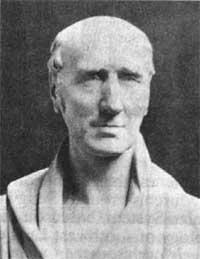
The latter are those that, once purified, form the lighting gas. They are mainly hydrogen, methane, carbon oxide, bencol, ethylene, carbonic acid and nitrogen. When surrounding an object at 500ºC this mixture of gases hardens. The light intensity of the flame depends first on the proportion of heavy hydrocarbons –ethylene, benzole– present in the gaseous mixture. These hydrocarbons, at the temperature of the flame, are dissociated releasing the carbon in small fractions. These carbon fractions give the flame a special yellow color when rising.
Secondly, it depends on the proportion of methane, which does not generate live flame when burning, but which provides a high temperature to the flame, since it serves to raise the fraction of carbon. Finally, the luminous intensity of the flame depends on the amount of air that is added for combustion. The low contribution of air will cause the escape to the atmosphere of certain hydrocarbons without burning completely, to the detriment of the vitality of the flame. The flame will be blue, like the one that occurs when burning alcohol. On the other hand, the excessive addition of air prevents the dissociation of carbon and the loss of brightness of the flame.
And the gas reached the urban streets
Let's retake the story. After several attempts without clear practical influences, the Scottish William Murdock was one of the main drivers of coal, with the name given to him at that time. He took an ox bladder, filled it with coal gas and blew it (as the balloons are inflated today) and put in the hole the end of a narrow tube and lit the fire at the other end of the tube, achieving a nice flame. He began to do this type of sessions and by 1792 he lit his house and his factory with coal gas.
In 1803 Boulton and Watt (James Watt, inventor of the steam engine) illuminated their factories in the London district of Soho. A follower of William Murdock, Samuel Clegg, improved gas production technology, inventing equipment for the condensation of tar vapours and discovering a system of gas washing with lime. Murdock and Clegg create a society for the deployment of gas installations.

A small shop with gas was lit in London and the citizens were created and kept in sight. In 1810 the City Council of London authorized the installation of public lighting in several streets. Once the works were executed and having everything ready for the inauguration, at the last moment the City Council proceeded to withdraw the authorization. He previously asked a group of scientists to advise him on the safety of gas installations and scientists said that a small gas leak in the pipeline could cause an explosion and destroy the neighborhood in case of fire.
Then something happened to Clegg. The mayor of London and all the councilors were invited to eat. The dining room was equipped with natural gas lighting, but it was no coincidence for municipal authorities. After the meal, Clegg suddenly appeared with a hairpin in her hands and said: "Before leaving I want to teach you something about the scientific opinion you have asked for." He approached the gas pipeline and began to hit with the picota. When he managed to drill the tube, he surrounded the fire to the hole. In their sight, the councilors, frightened, headed towards the door of the dining room, but the door was locked. However, the explosion they expected did not occur, but only a peaceful flame was expelled from the hole. Thus they demonstrated the safety of the installation and of course they recovered the authorization.
In 1814 the public gas lighting of London was inaugurated and spread rapidly through Europe. After London came from Paris in 1817; in Hannover in 1825, Berlin in 1826, Frankfurt in 1828, Vienna in 1833, Barcelona in 1842, Hamburg in 1846, etc. As for America, it should be mentioned that in 1801 Henfrey illuminated a large Baltimore room with gas extracted from the lignite and that Baltimore's public gas lighting was inaugurated in 1816. In the United States it expanded as fast as in Europe.
It expanded rapidly, but we must not forget that gas is dangerous. In fact, when gas and air are joined in certain proportions, a gas volume of 6 to 10 volumes of air, an explosive mixture is produced. The risk of explosion is not the only risk for gas. As is known, gas is toxic; a proportion of gas 3% in the air of a room would be enough to kill people in it. However, the presence of gas is easily perceptible by the smell, for which its proportion in the air is 0.0001%. Therefore, in the beginning there were several explosions and accidents, since it was a new technology, but nevertheless, its advantages regarding candles and oil lamps were clearly superior to the danger that it carried with it.
As has been said, the gas lighting was quickly imposed on the public lighting of the cities. Throughout the first half of the twentieth century, extending successively to interior lighting. However, to say that gas lighting quickly expanded does not mean that you did not find enemies on the road. In fact, the advance with respect to lighting systems until then was difficult, new possibilities were opened and it must be thought that it would affect quite the lifestyle of the society of that time.
Then science rediscovered religion, although the strength of the Church was no longer the same at the time of Galileo. Religious fundamentalists used theological reasons against the technique: It was God who founded the night to eliminate the tiredness of the day's work through rest and sleep. Therefore, fighting the night was fighting against God. XIX. In newspapers and magazines of the beginning of the century very strange writings were published against gas lighting, but, as we have seen, it was a failed attempt.
Improvements in the gas lamps
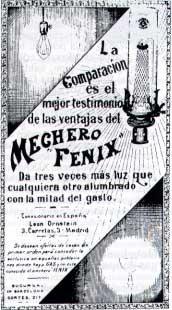
The natural gas lighting had an intense and rapid development, not only geographically, but also in terms of the quality of lighting and equipment. From the first moment the improvements focused on increasing the performance of the lamps. The most important piece in the gas lamps is the burner, which should give the proper shape to the flame, since otherwise the jet of gas that leaves through the mouth of the tube will be mixed little air and will cause a hita flame that will form soot.
The burners were made of iron, brass, porcelain or steatite. The non-metallic ones were better, did not absorb so much heat and did not clog by the oxides. The first burners had a single circular hole and gave an arrow-shaped flame, they were not very suitable. Then the cut burner or the butterfly was invented. It is a spherical button and the gas comes out of a narrow groove, giving a smooth flame, wider than long and large surface. On the other hand, in the housings was very used the burner type crown or the burner Argand, which was called by analogy with the lamp Argand, in the previous number: it is circular, has between 12 and 24 holes of which the gas leaves forming a circular flame. Thus, the air passes through the outside and the inside of the flame, improving the combustion.
Later appeared the second generation of burners. The brightness of the flame is an exponential function of the temperature. Therefore, it is advisable to maximize the temperature of the flame. By heating the air at 500ºC it was observed that the luminous power of the burners doubled. Aware of this, new lamps were designed preheating the air and gas that had to be used in combustion. This was done for the first time by the famous German inventor Siemens when he invented the lamp that bears his name: to give him the same intensity of light he had a third less gas consumption than the rest of burners.
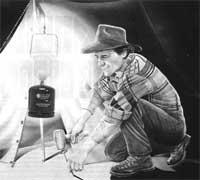
In addition to the improvement of the burners, several attempts were made to improve the gas itself to increase the light capacity of the gas. However, all these programs were suspended in the XIX. When at the end of the twentieth century Auer invented the incandescent lamp, the burner Auer or the lamp Auer, starting the third generation burners, since in this lamp the luminous capacity of the gas is not taken into account. In this burner, the flame is surrounded by a sleeve or shirt, composed of 99% thorium oxide and 1% cerium oxide.
Gas combustion raises the portfolio and the chemical reactions that occur in its components emit visible radiation. Therefore, the Auer lamp meant an important qualitative change with respect to all existing light sources until then. In fact, in all previous lamps — torches, oil lamps, candles, gas lamps — the element that was raised was carbon. In the lamp Auer are other elements. Incandescent sleeves require a long and complicated manufacturing process, but the performance of this lamp is very high.
It should be known that by the time Auer launched his lamp, Edison had invented the electric lamp and that for years two lamps were in competition. And today, when we go to the mountain or somewhere with the tent, there is no doubt that the so-called "lumigas", that is, the lamp Auer, gives more light and cheaper than the electric lighting.
Finally, a table shows the progress made by the gas lighting, that is, the light intensity obtained per cubic meter of gas burned according to the burner used:
Simple Burner Argand Burner Siemens Incandescent burner Auer
45 70 140 160Spark plugWhen the gas lighting appeared, there was no lack of enemy. Here, witness, part of a curious article published in the newspaper Koniche Zeitung on March 28, 1819.
|

Gai honi buruzko eduki gehiago
Elhuyarrek garatutako teknologia



